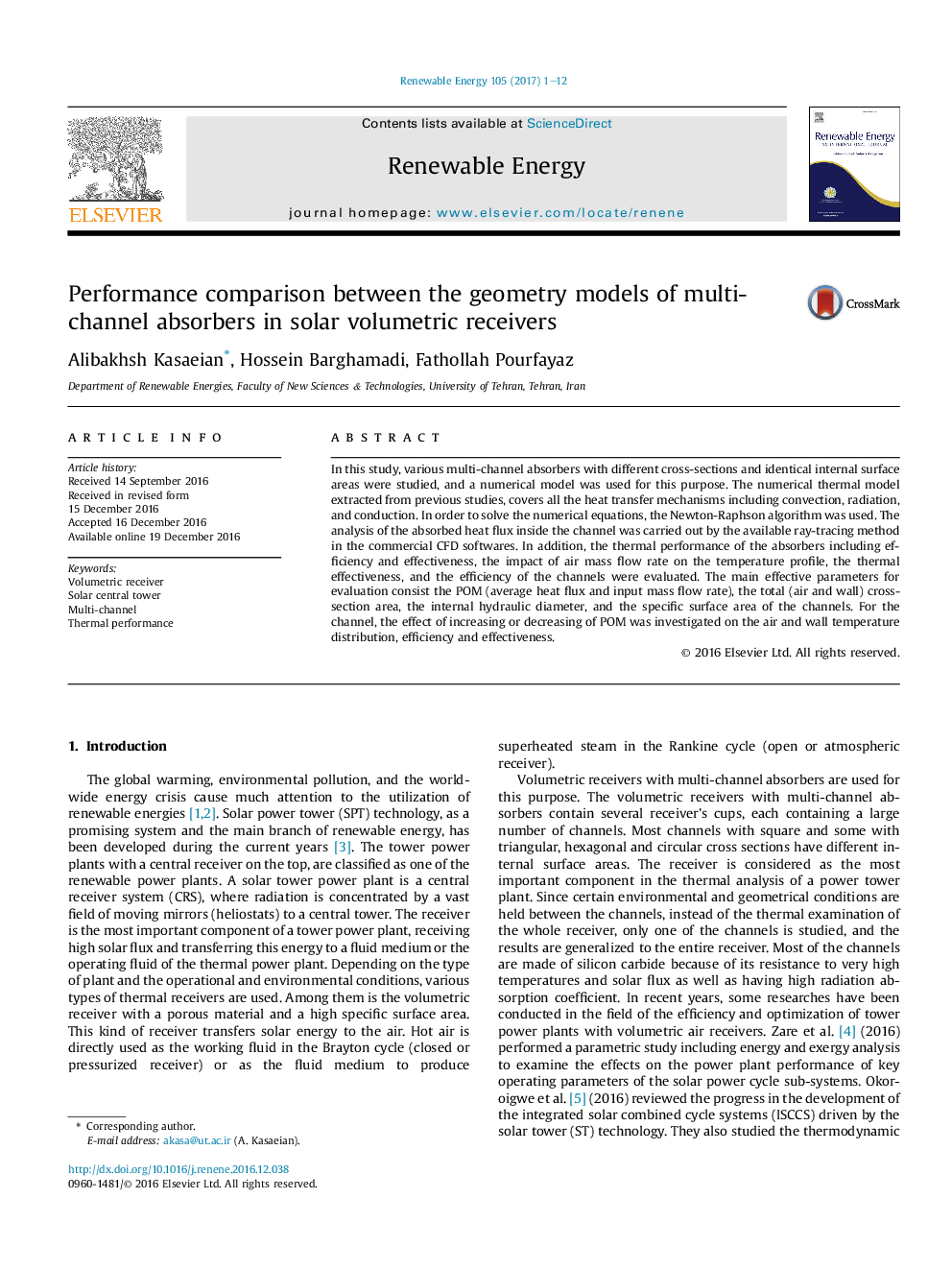| Article ID | Journal | Published Year | Pages | File Type |
|---|---|---|---|---|
| 4926411 | Renewable Energy | 2017 | 12 Pages |
Abstract
In this study, various multi-channel absorbers with different cross-sections and identical internal surface areas were studied, and a numerical model was used for this purpose. The numerical thermal model extracted from previous studies, covers all the heat transfer mechanisms including convection, radiation, and conduction. In order to solve the numerical equations, the Newton-Raphson algorithm was used. The analysis of the absorbed heat flux inside the channel was carried out by the available ray-tracing method in the commercial CFD softwares. In addition, the thermal performance of the absorbers including efficiency and effectiveness, the impact of air mass flow rate on the temperature profile, the thermal effectiveness, and the efficiency of the channels were evaluated. The main effective parameters for evaluation consist the POM (average heat flux and input mass flow rate), the total (air and wall) cross-section area, the internal hydraulic diameter, and the specific surface area of the channels. For the channel, the effect of increasing or decreasing of POM was investigated on the air and wall temperature distribution, efficiency and effectiveness.
Related Topics
Physical Sciences and Engineering
Energy
Renewable Energy, Sustainability and the Environment
Authors
Alibakhsh Kasaeian, Hossein Barghamadi, Fathollah Pourfayaz,
